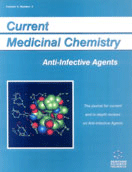Abstract
Antimicrobial peptides occur in a diverse range of organisms from microorganisms to insects, plants and animals. Although they all have the common function of inhibiting or killing invading microorganisms they achieve this function using an extremely diverse range of structural motifs. Their sizes range from approximately 10-90 amino acids. Most carry an overall positive charge, reflecting a preferred mode of electrostatic interaction with negatively charged microbial membranes. This article describes the structural diversity of a representative set of antimicrobial peptides divided into five structural classes: those with α-helical structure, those with β-sheet structure, those with mixed helical/β- sheet structure, those with irregular structure, and those incorporating a macrocyclic structure. There is a significant diversity in both the size and charge of molecules within each of these classes and between the classes. The common feature of their three-dimensional structures is, however, that they have a degree of amphipathic character in which there is separate localisation of hydrophobic regions and positively charged regions. An emerging trend amongst antimicrobial proteins is the discovery of more macrocyclic analogues. Cyclisation appears to impart an additional degree of stability on these molecules and minimizes proteolytic cleavage. In conclusion, there appear to be a number of promising opportunities for the development of novel clinically useful antimicrobial peptides based on knowledge of the structures of naturally occurring antimicrobial molecules.
 4
4

